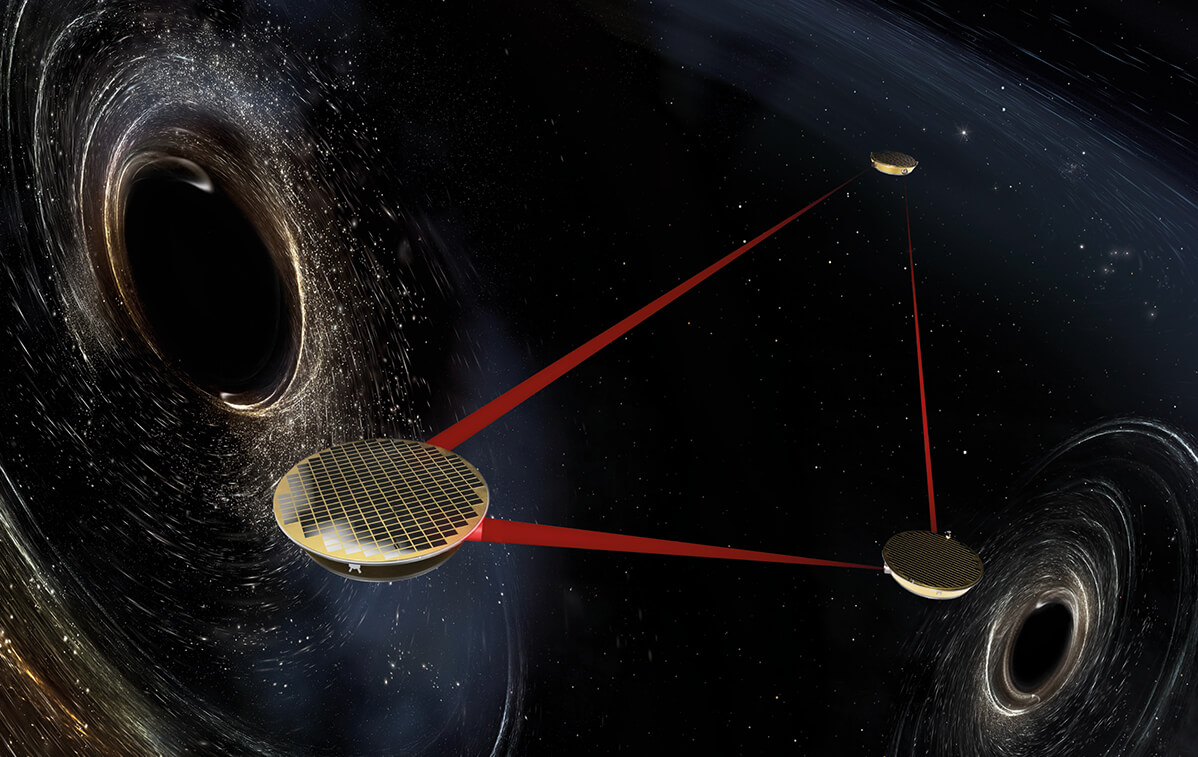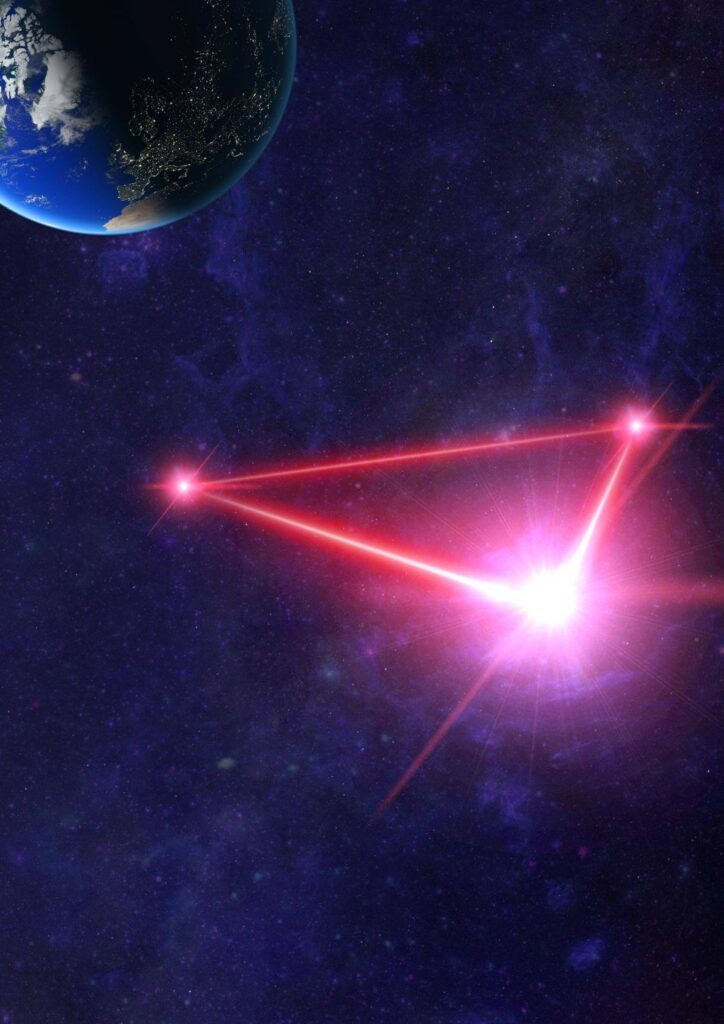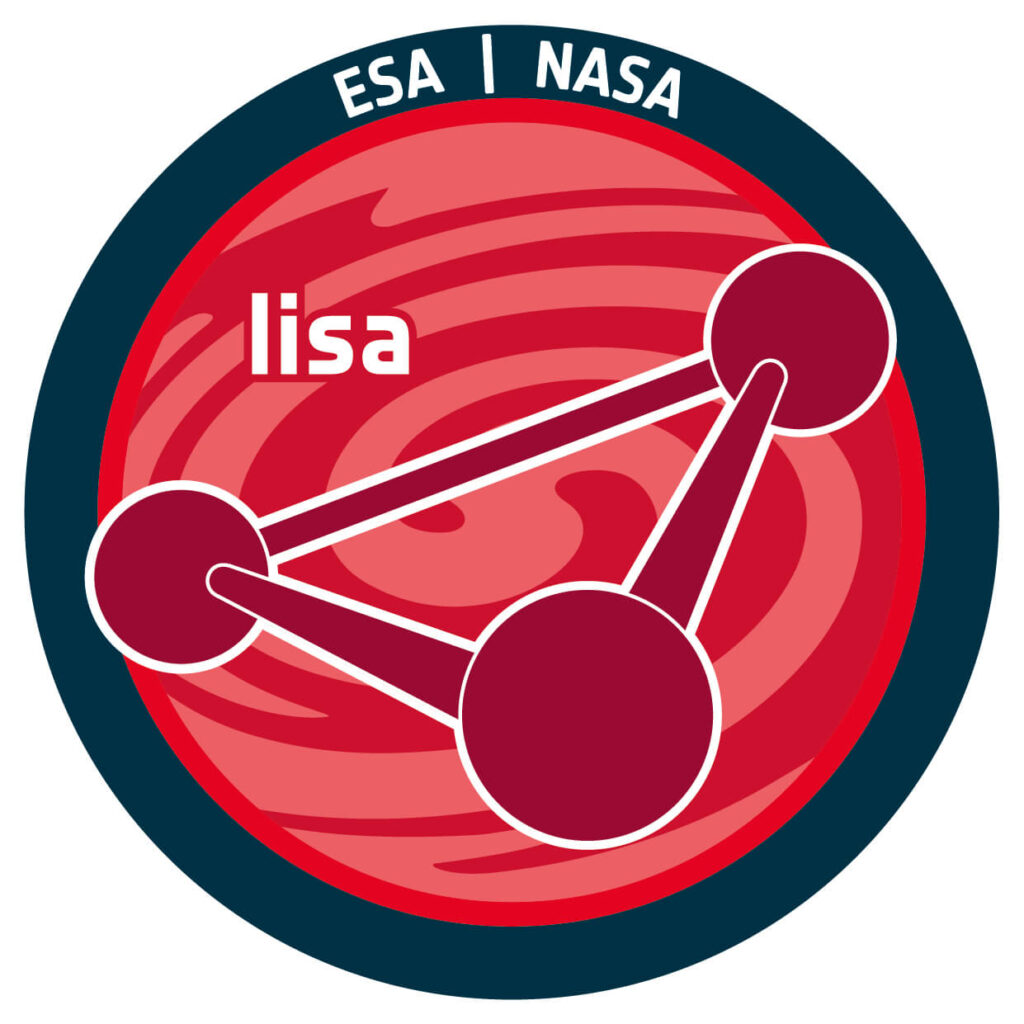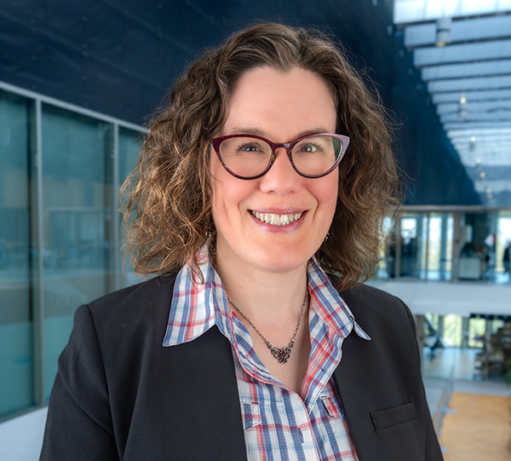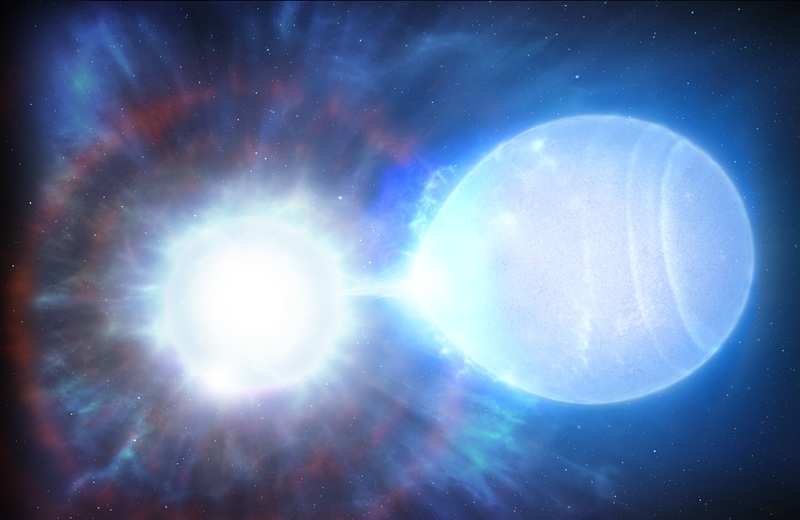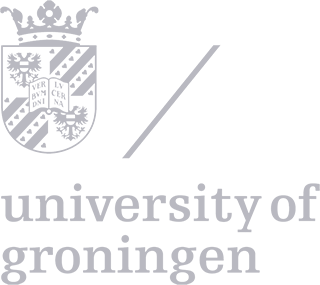| Status | In development |
| Launch | 2037 |
| Space organisation | ESA |
| Type | Gravitational waves (105-109 km) |
| Orbit | Heliocentric (55 million km trailing Aarde) |
| SRON contribution to | Photodiodes and Mechanism Control Unit |
LISA listens to the universe
All SRON missions capture electromagnetic radiation, such as infrared, X-ray or visible light. But that is beyond LISA, which does not “look” at the universe, but “listens” to it. Just as sound waves are vibrations of the air, gravitational waves are vibrations of space. Detectors on Earth thus observe black holes or compact stars colliding with such violence that they can still be heard millions of light years away. Collisions between even heavier objects generate waves with longer wavelengths, which are audible only to telescopes with a wingspan much larger than the Earth. In space, LISA can extend its arms up to 2.5 million kilometers and thus hear mergers of supermassive black holes. It is sensitive to wavelengths between a hundred thousand and a billion kilometers.
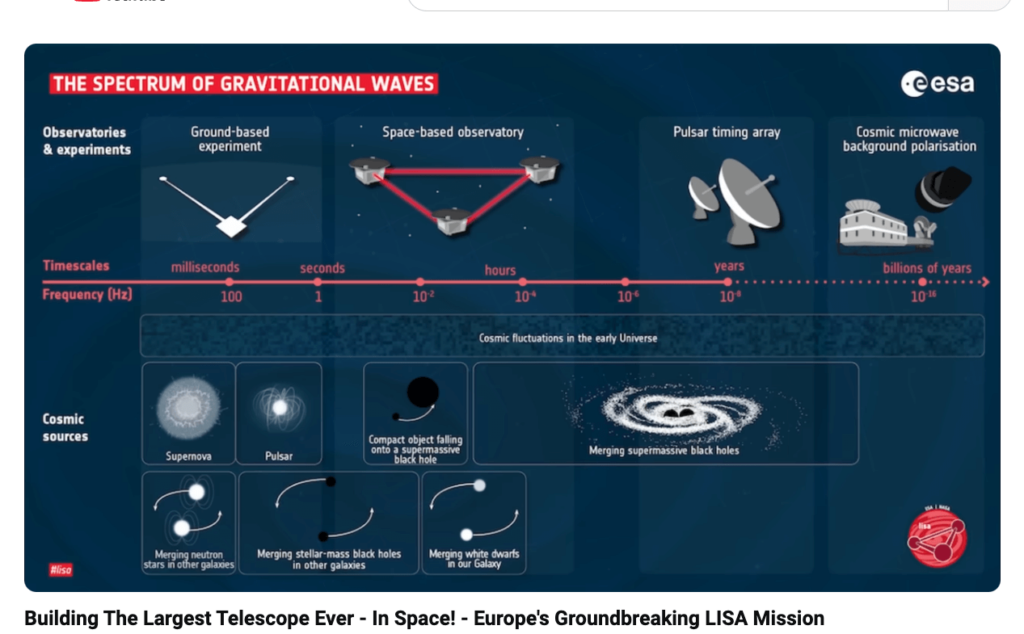
Far Universe
Gravitational waves from the distant universe also have low frequencies because their wavelengths stretch during their journey thanks to the cosmic expansion of the universe. Thus, LISA is the first to make measurements of the period just after the Big Bang, when the universe was likely expanding at unprecedented rates. Astronomers also hope to use LISA to see the first seeds of supermassive black holes in the first hundreds of millions of years of the universe. The (run-up to) collisions of compact double systems in our Milky Way are also within LISA’s scope, both of double black holes and of other types of compact double systems.
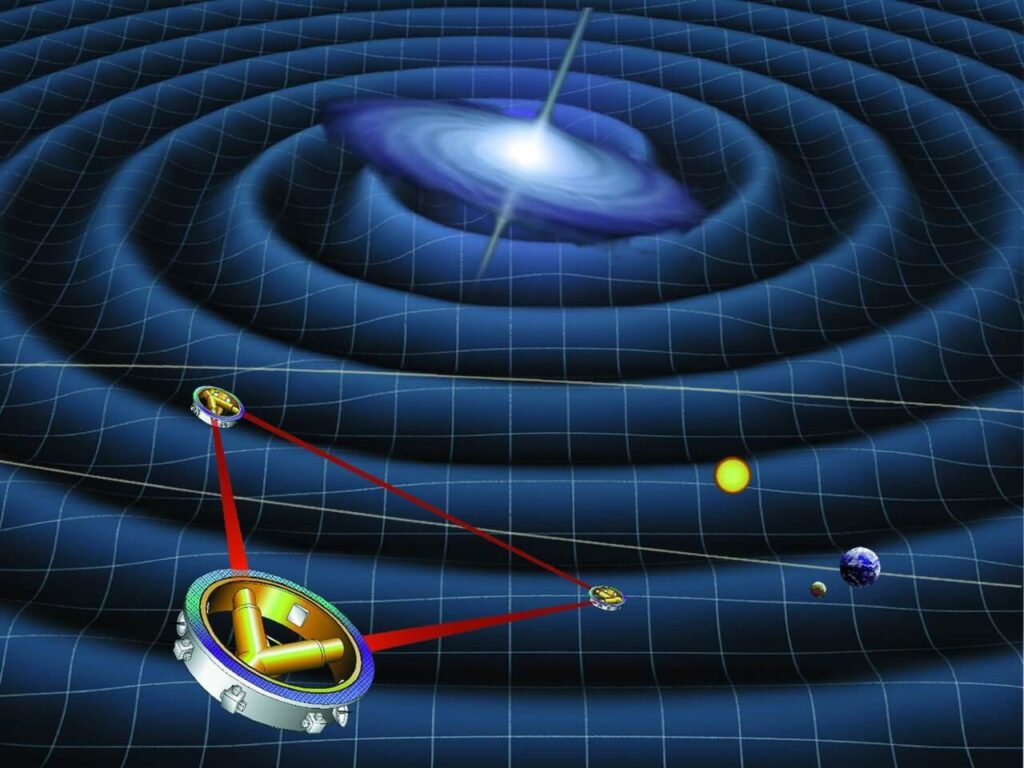
Three spacecraft
LISA consists of three spacecraft that monitor their mutual distance with laser beams. When that distance undulates up and down, the detector knows that a gravitational wave is passing. LISA becomes so sensitive that at certain wavelengths it already notices the stretching of space on a scale of one in a trillion, or a 1 with 21 zeros. With LISA’s arms, that amounts to variations of a few picometers. This is also necessary because many of the celestial bodies studied are billions of light-years away, and so their gravitational waves are attenuated when they arrive in our solar system.
Detectors for infrared lasers
SRON, together with Nikhef, Bright Photonics and Smart Photonics, is developing the detectors that receive the infrared laser beams (LINK naar https://lisa-nl.nl/). This is no mean feat, because although the lasers are initially as bright as a 1-watt table lamp, after their 2.5-million-kilometer journey they are toned down to 250 picoWatts. That also means you can’t reflect them back with a mirror, as with ground-based telescopes. Instead, the detector measures a particular property of the laser that fluctuates rapidly. So the arrival time of the laser determines that property at that time. If it varies between successive laser pulses, a gravitational wave must have passed through.
Mechanism for moving parts
SRON is also developing the mechanism that controls the moving parts, together with TNO and other institutes. Among other things, this must give the laser beams exactly the right direction. An additional difficulty is that the lasers take eight seconds to reach another spacecraft, while it is hurtling through space at full speed. This amounts to pointing out from the Netherlands where a dime will be in eight seconds as it falls from the Eifel Tower.



